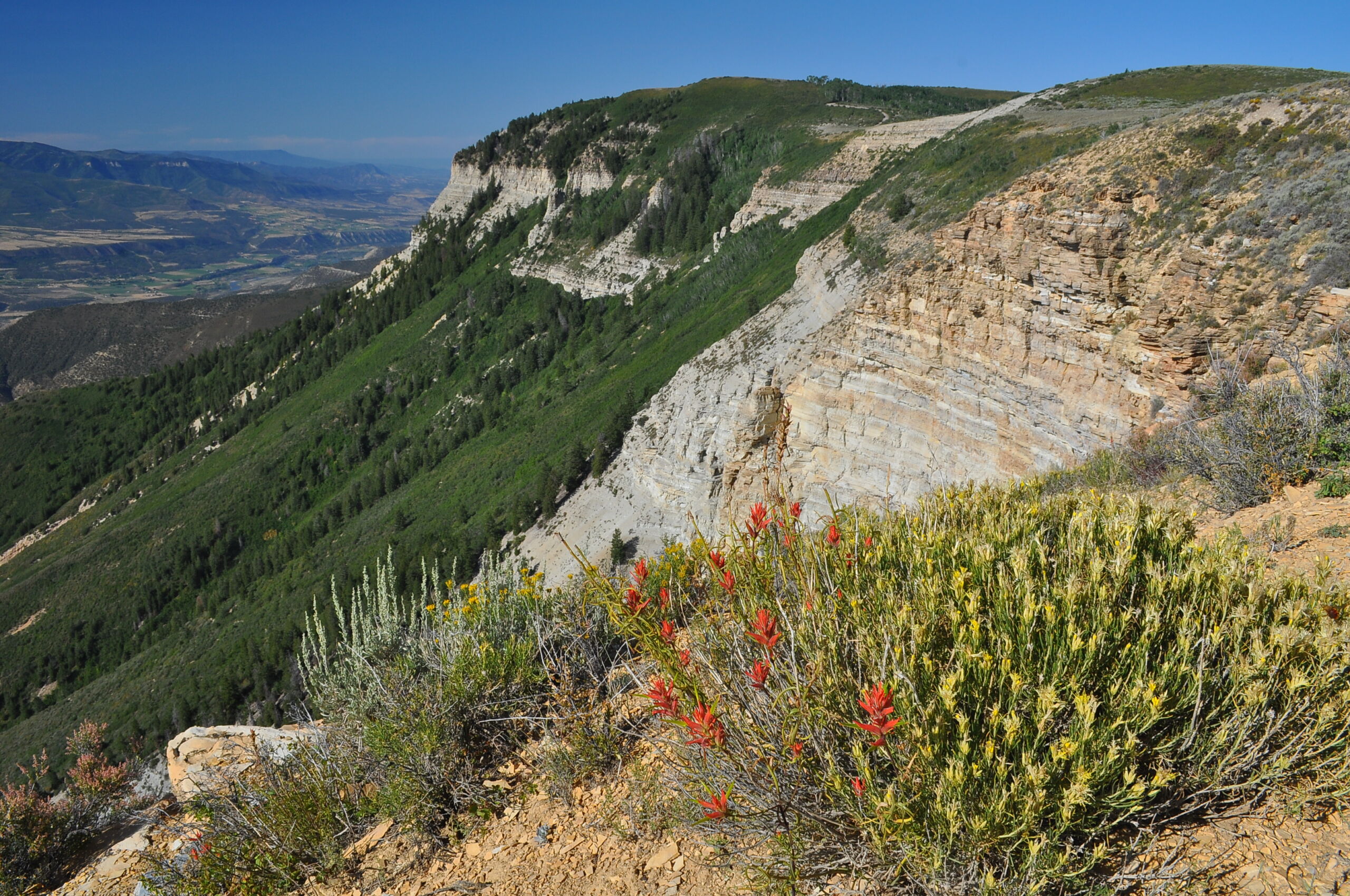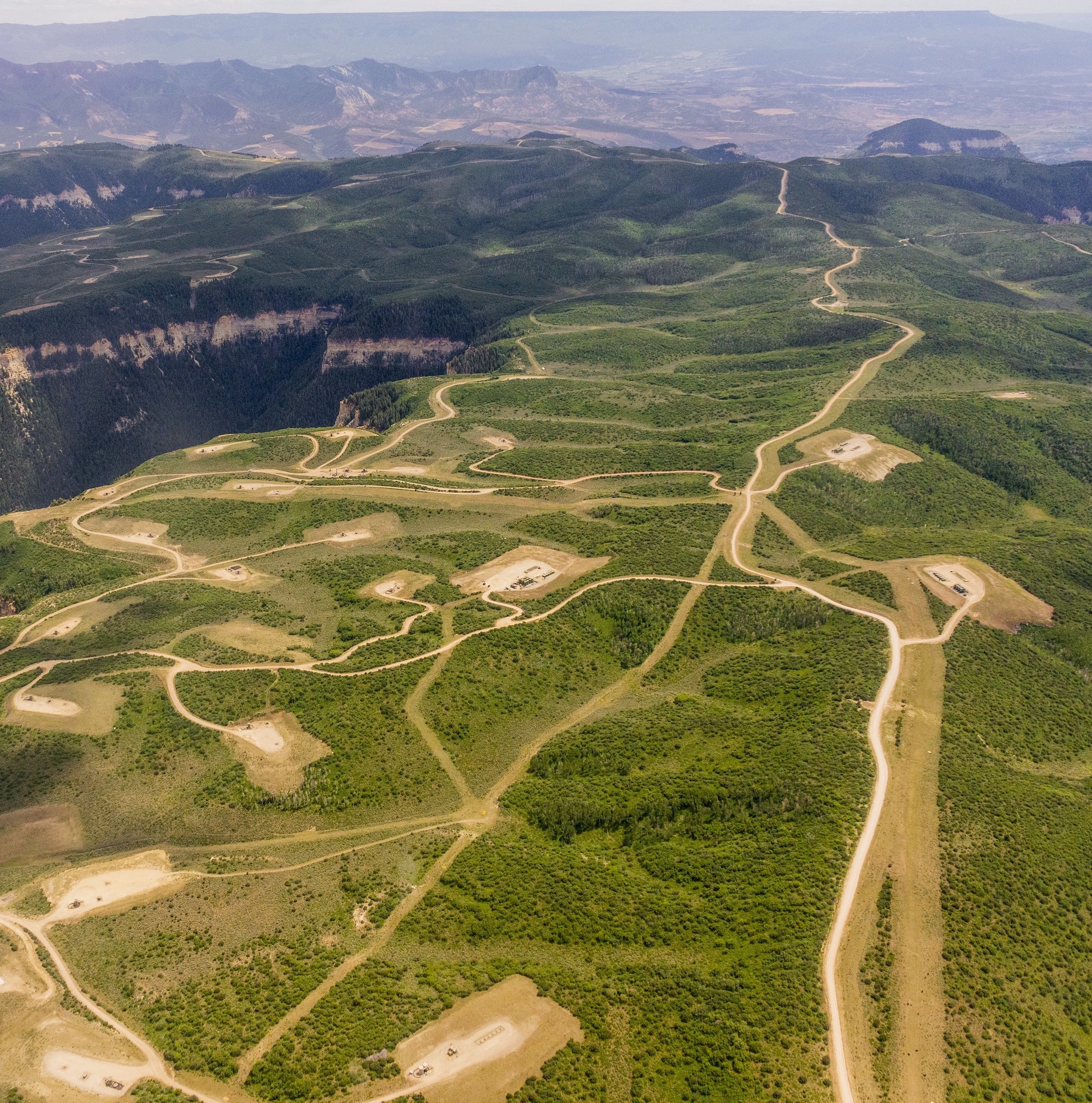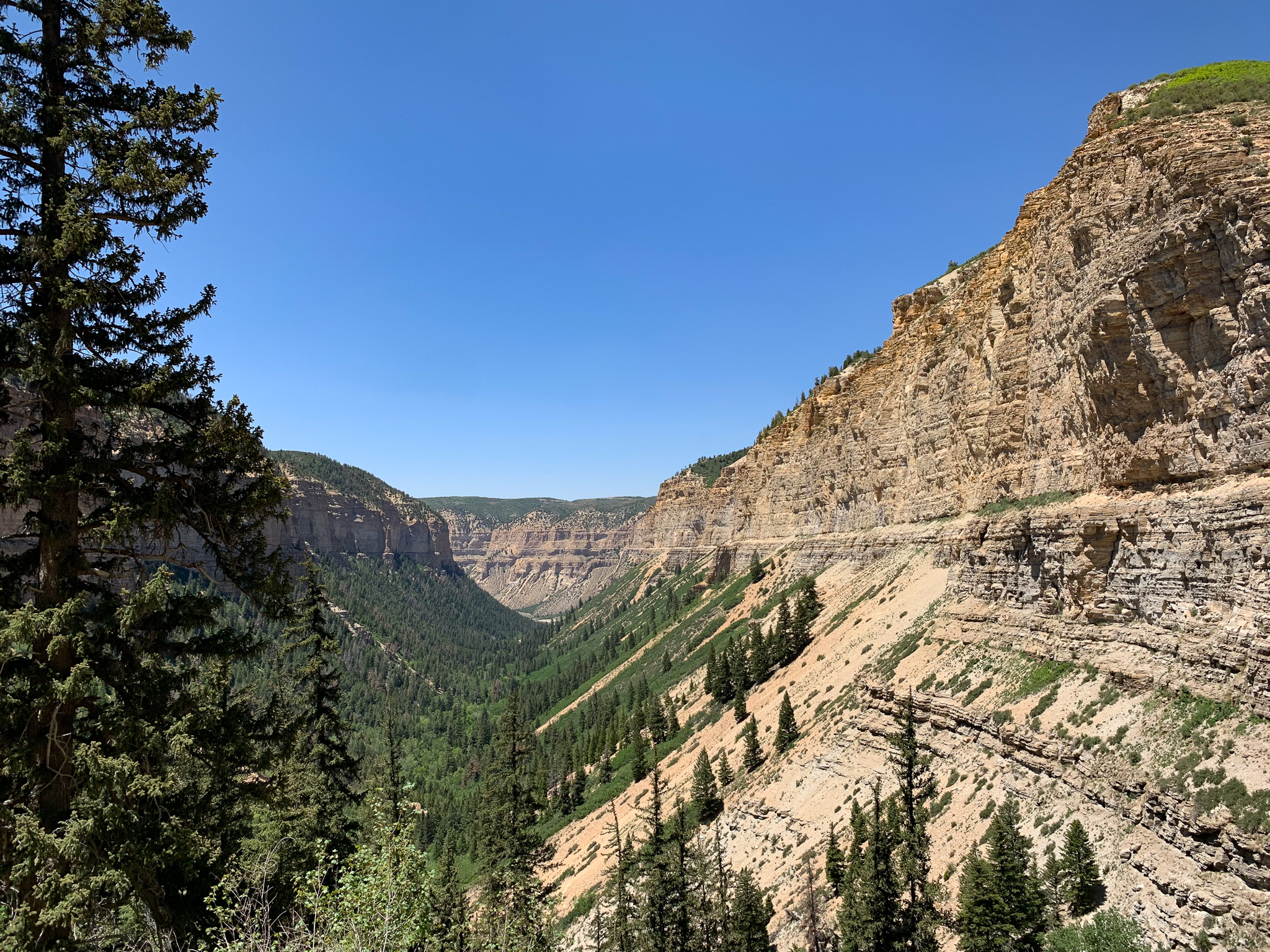One of the most biologically rich places in Colorado successfully protected from oil and gas development.
Instantly recognizable to anyone who has driven I-70 from New Castle to Grand Junction, the Roan Plateau towers 3,000 feet above the Colorado River, a visually stunning, undeveloped island of public land surrounded by intense gas drilling activity. Home to numerous rare plants, including the rare Parachute penstemon, the Roan is a backcountry haven for big game, genetically pure Colorado River cutthroat trout, and a magnet for outdoor and wildlife enthusiasts, hunters, and anglers.

Atop the Roan Plateau. Photo Courtesy Scott Braden.
Because of a lawsuit and eventual settlement by Wilderness Workshop and partner groups in the conservation and sporting communities, in 2016 the Bureau of Land Management (BLM) adopted a new management plan that prohibits oil and gas development on 90% of the public lands atop the plateau and provided a new lease on life for this natural gem. Today, WW continues our efforts to protect the Roan – through advocacy, hands-on restoration projects with our members and vigilant review of any proposed development. WW also continues looking for ways to secure closure for the remaining 10% of the top of the Roan that is still open to new leasing.
Ecologically Significant
The Roan ranges in elevation from 5,000 to 9,000 feet and hosts varied habitats and vegetation including mountain meadows, juniper woodlands, sagebrush, aspen stands, gambel oak, and Douglas fir. With thousands of acres of remote roadless land, it provides habitat for some of the country’s largest mule deer and elk herds, bears, mountain lions, and some of the rarest plants in North America. Deer and elk travel to the top during the summer and head to the base for forage in winter.
The area on top of the Plateau is bisected by streams that are recognized by the state as Outstanding Waters: Trapper Creek, Northwater Creek, and the East Middle Fork.

Oil and gas development atop the Roan. Photo Courtesy EcoFlight.

A canyon atop the Plateau. Photo courtesy Scott Braden.
Background
As part of the “drill, baby, drill” strategy employed by the Bush administration from 2000 to 2008, the president issued an executive order to “expedite energy-related projects” by limiting protections for wildlife and natural resources and fast-tracking leasing on public lands. Companies bought millions of acres of leases during this land rush, with so many leases sold that they exceeded both demand and the oil companies’ capacity to develop them.
A BLM auction in August 2008 leased all of the federal lands on the Plateau for drilling. A coalition of conservation groups, including WW and represented by Earthjustice, sued to protect the important scenic, wilderness, and wildlife values of the Roan and won the case before the U.S. District Court in Denver in 2012. The parties then came to the table and hammered out a settlement that provides lasting protections for the Roan while allowing development to proceed in certain areas around the base of the Plateau. Settlement negotiations lasting nearly two years produced an agreement in 2014, which eventually led to the BLM conducting a new Supplemental Environmental Impact Statement and Resource Management Plan, which was finalized in November 2016.
That settlement resulted in the cancellation of nearly all of the leases on top of the Plateau, and a refund of $47.6 million in lease payments from the federal government. The company that bought the leases atop the plateau had planned to drill more than 3,000 wells there, which would have turned the entire area into an industrial zone and funtionally destroyed the important wildlife habitat. The settlement also proposed a highly protective management approach that closes almost all of the top of the plateau to new leasing and development. In addition, it proposed additional protections for areas where drilling is allowed and called for recognizing the value of lands around the base of the plateau.

